Geology Walk Recap

We had a fantastic turnout on a beautiful morning on November 8 for a fun geology tour of Glen Providence Park! With humor and interesting anecdotes, geologist Charles Randall taught us about the “orogeny,” the geological forces that created the terrain of the “glen,” which is the Scottish term for a deep valley. It wasn’t caused by glaciers – the glacier line was north at Blue Mountain in the Poconos!
The Appalachians, once as high as the Himalayas are today, were formed when the African tectonic plate collided (over millions of years) with the North American plate. The glen is (perhaps fortuitously) parallel to both the Appalachians and the Atlantic coast, in line with the geologic faults from that collision. It is interesting that before tectonic theory had developed, T. Chalkley Palmer made some accurate observations about the geology of the glen in his 1889 essay about Scroggie Valley!
Don’t expect to find any fossils in the park – there simply aren’t any in the metamorphic Wissahickon Schist that underlies the area. Wissahickon Schist has varying amounts of mica and quartz, and comprises some of the rocks in the Eleanor Reed Butler Waterfall by the pond. The stream is the best place to look for rocks in the park, as those on land are generally covered with soil – but after many years of disruption, even those in the stream might not have originated in the park.
Along the way on our walk there were turtles, lingering fall foliage, a Belted Kingfisher flying over the pond, and the native American witch hazel with its yellow flowers in bloom. Thank you to Charles Randall for leading us, and to the 36 adults and kids who attended, including a group of Cub Scouts!
Check out some photos below of our beautiful late-fall walk – click on any for a closer look.
- Heading in from the 3rd & West entrance
- Charles Randall
- Mica
- Geology Walk
- American witch hazel in bloom

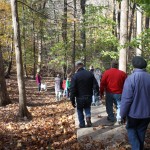
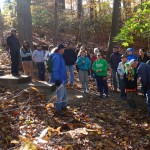
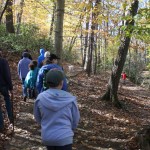
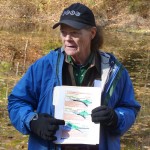
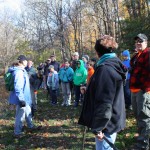
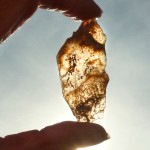
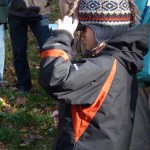
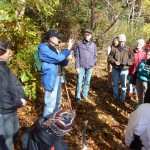
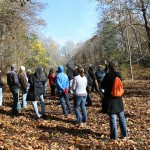

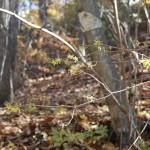






Recent Comments